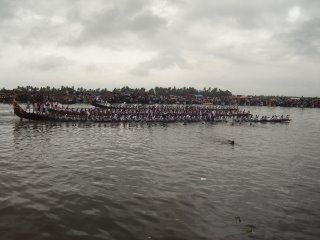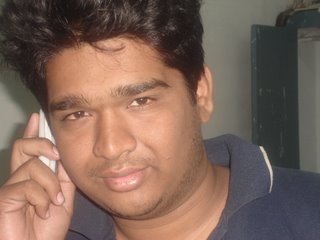THE NEHRU TROPHY BOAT RACE

The traditional boat race in Kerala also known as Nehru trophy boat race is held every year in association with the festival Onam. This race is held in the backwaters of kuttanadan in Alappuzha(also known as Allepy). Winning this boat race is a matter of prestige for every boat club in the state. Also the prizes are also very attractive with more and more sponsors coming every year. This year 52nd Nehru trophy boat was held on 12th august.
HistoryThe History of Nehru Trophy Boat Race is associated with the visit of late Pandit Jawaharlal Nehru, then Prime Minister of India to Alappuzha. The first race was an impromptu one conducted in 1952 in honour of Pandit Jawaharlal Nehru who visited Alappuzha. In that race of snake boats, ‘Nadubhagam Chundan’ stood first. Pandit Jawaharlal Nehru who was thrilled and excited by the performance of the oarsmen, jumped into the ‘Nadubhagam Chundan’, forgetting all security arrangements. The boat proceeded to the boat jetty carrying the Prime Minister. After his return to Delhi, a few months later in December 1952, Pandit Jawaharlal Nehru donated a silver trophy, which is a replica of a snake boat placed on a wooden abacus. The trophy bears the following inscription above his signature; “To the winners of the boat race, which is a unique feature of community life in Travancore - Cochin.” This trophy later came to be known as Nehru Trophy, and in fond memory of great Pandit Jawaharlal Nehru, the people of Alappuzha celebrate the Nehru Trophy Boat Race every year.
Boats and Composition of the teamThe boats of Kerala are known after their shapes, sizes or purposes. The Chundaanvallam is so called because of its pointed prow. The term snake boat comes from its stern, which represents the raised, the hood of a snake and its length . The front end of this type of boat will be tapering in shape and the rear end will be very high from the water level. They have a length of about 60-65 meters and a capacity carrying hundred to hundred and ten people during the race time. The stern is majestically caparisoned and decorated with a flag and brass ornaments. Silken parasols are arrayed along the entire length of the boat. There will be almost 95 oarsmen, 5 Amarakkar (Controllers) and 10 'Nilakkar' (persons supposed to enhance the vigour and enthusiasm of the participating oarsman). It has got a resemblance to the shape of a snake, when it advances in a competition and hence became popular as snake boats. Snake boats are the traditional battle vessels of Kerala known as Chundan vallams . They were originally designed as a naval vessel used for battle.
Team effortFor many of us team effort is when India wins a cricket series. But I feel this race has team effort more than any other sport. There are about 95 oarsmen all of whom have to execute their job simultaneously. If not done simultaneously, the speed won’t be maintained and also the boat will become difficult to control. For doing this simultaneously there is no synchronization clock as we have in our electronic circuits, It is the Vanchi pattu(the boat song) that helps them to execute simultaneously with the group. It is really very interesting to see all these people rowing simultaneously as if it is some machine that is working. 5 people who steer the boat are also of great importance and their action is to control the direction of the boat. In case when the boat has to go straight and if among 95 oarsmen, one of them makes a mistake, it is the controller’s duty to rectify it immediately otherwise it may cumulatively change the coarse of the boat.
Then come another 10 people who do nothing directly to the boat but are in fact extra weight in the boat. These ten men are responsible lifting the morale of the team. They sing songs at the highest pitch they can even if their boat is at the last place. Apart from this, it is their song that helps people execute their job simultaneously.
VANCHIPATTU (SONG OF THE BOATMAN)These highly rhythmic songs were created to keep up the spirits of the boatmen. The rhythm of these songs blends perfectly with the movement of the oars and to keep up devotional, mythological or relating to rustic life styles. Every snake boat has about ten singers keeping time with traditional percussion instruments
One famous song I can think of goes like this…
Kuttanadan kunjayille’
kochu penne’ kuyill alle’
kottu vennam kurall vennam, kuravva vennamoh thi thi thara thi thi thaye thi thaye’ thaka thaka thom.(these lines are repeated at different tempos… from slow to fast)
Let me try to translate it in English…
In the back waters of Kuttanadan
There lived a young girl and a young guy who was a good singer too.
There should be drumbeats, people shouting in the background (for what occasion, even I’m not sure because I don’t know the full version of the song).
Thi thi thara… is the rhythm they are all shouting…
Watching this race from the gallery is a real treat to both our eyes and brain. I was really enthralled by watching so many men in action in such a good manner. Their team effort is indeed a lesson to learn. The most important that, I’m sure, will remain in my mind and heart for a long time will be the ten 'Nilakkar' (persons supposed to enhance the vigour and enthusiasm of the participating oarsman). Never before I realized the importance of such people. Their song is still on the tip of my tongue.
Kuttanadan kunjayille’….

